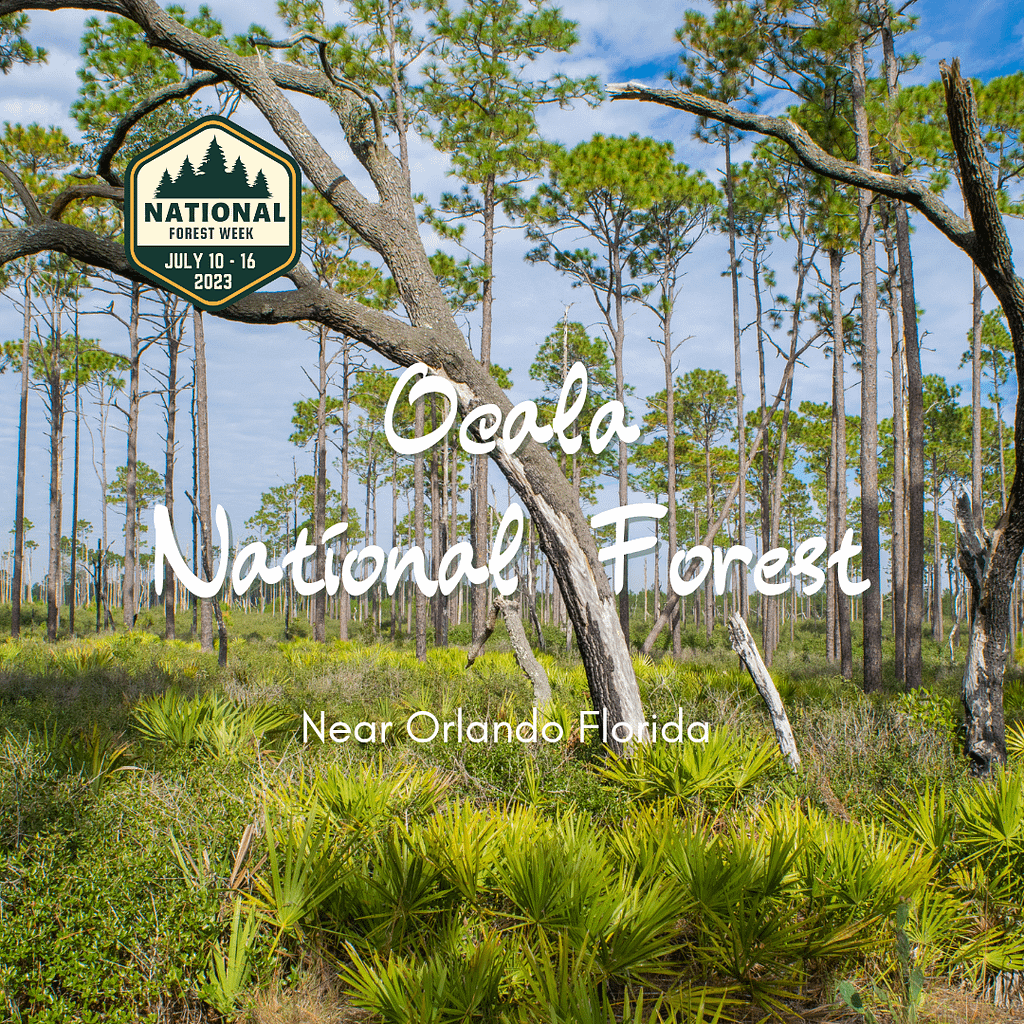
Located in the heart of Florida, the Ocala National Forest captivates visitors with its expansive natural beauty and diverse ecosystems. Covering over 600 square miles, this forest is a vibrant tapestry of lush woodlands, crystal-clear springs, and shimmering lakes. Adventurers and nature enthusiasts alike flock to this enchanting destination to explore its extensive network of trails, which cater to hikers, bikers, and horseback riders. The forest’s rich biodiversity supports a fascinating array of wildlife, including black bears, bald eagles, and alligators. Visitors can immerse themselves in the tranquil beauty of the forest while engaging in activities such as camping, fishing, and canoeing. The Ocala National Forest not only serves as a sanctuary for nature but also offers a glimpse into Florida’s unique landscape, making it a cherished destination for those seeking both adventure and serenity.
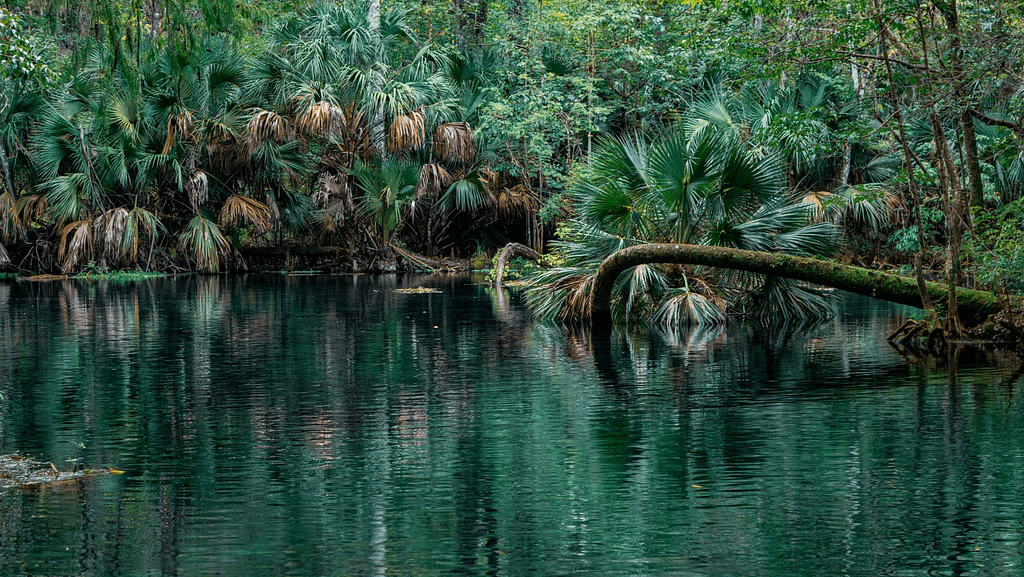
Origin and History
The Ocala National Forest was established in 1908, becoming the second national forest east of the Mississippi River and the first in Florida. President Theodore Roosevelt, a fervent advocate for conservation, signed the proclamation that created this vital reserve. From its inception, the forest aimed to protect the region’s unique flora and fauna while also preserving its natural resources for future generations. Over time, the forest’s role expanded to include recreational opportunities, reflecting the growing public interest in outdoor activities. This transformation was gradual, yet it underscored the forest’s enduring significance as a cherished natural haven.
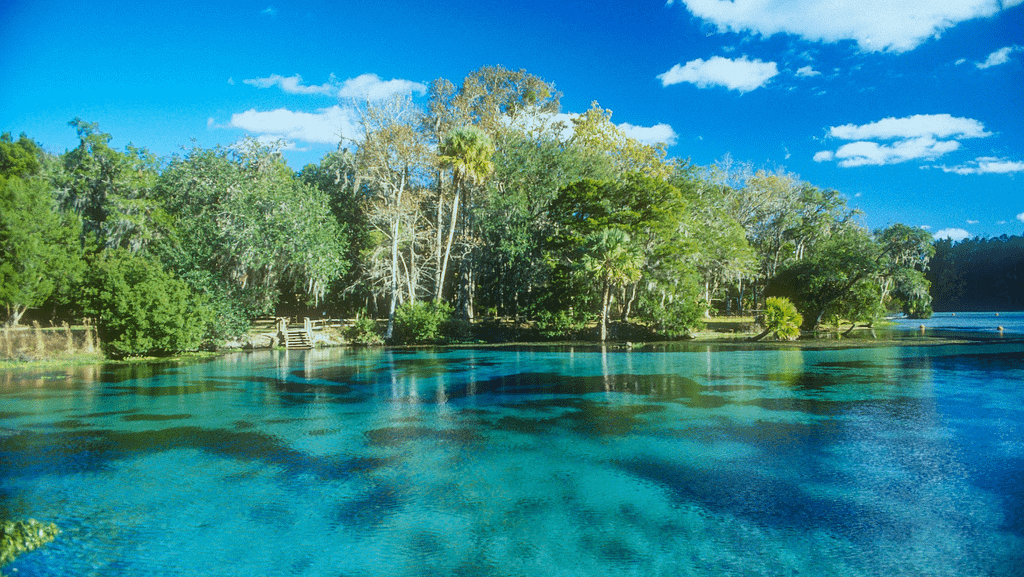
As the decades progressed, Ocala National Forest evolved to meet the changing needs of both the environment and its visitors. During the mid-20th century, conservation efforts intensified to combat the threats posed by urbanization and environmental degradation. The forest management team implemented sustainable practices, ensuring the preservation of its diverse ecosystems. Additionally, they enhanced the infrastructure to accommodate an increasing number of visitors, thus promoting ecotourism while safeguarding the environment. Today, the Ocala National Forest stands as a testament to successful conservation efforts, embodying a harmonious balance between human enjoyment and the preservation of nature’s splendor
Ocala National Forest Ecoregions
The Ocala National Forest is part of the southeastern conifer forest and Florida sand pine scrub ecoregions. Within the ecoregions are two types of growth areas, the Florida longleaf pine sandhills and the Florida peninsula inland scrub. These areas are situated on well-drained sandy hills. The longleaf pine trees are the dominant growth in the sandhills along with other types of trees in the understory. Inland scrub consist of various types of xerophytic shrubs, especially oak with an occasional longleaf pine. There are several varieties of shrubbery in the inland scrub, including some endangered ones.
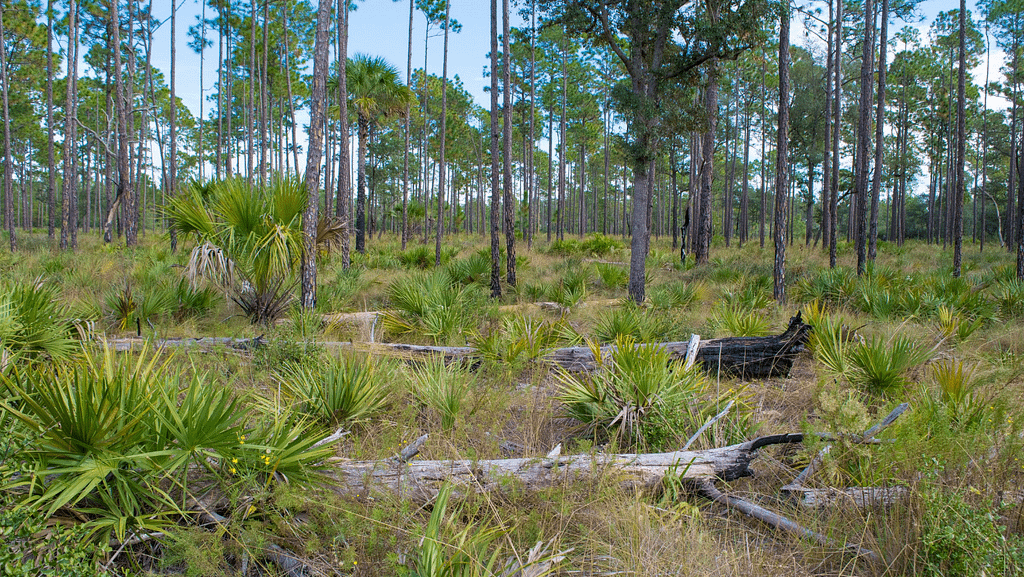
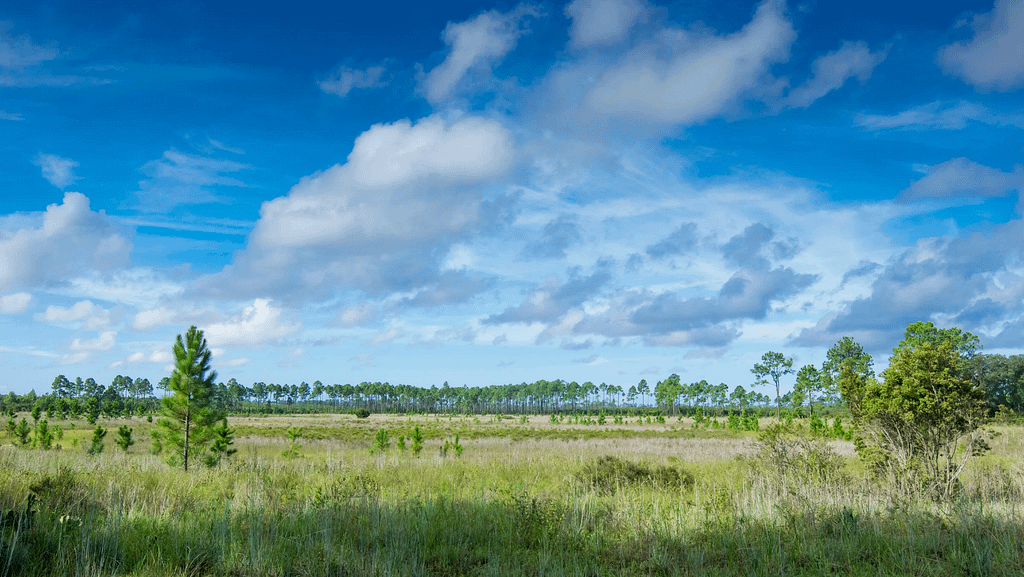
While the two communities are markedly different in appearance, both are unique in their own way. Some of the best stands of longleaf pine are found in the Ocala National Forest. The forest contains the largest concentration of the sand pine in the world. The inland scrub habitat hosts the Archbold Biological Station near Lake Placid which sponsors biological research. Both communities are maintained by frequent fires to help maintain growth and reforestation.
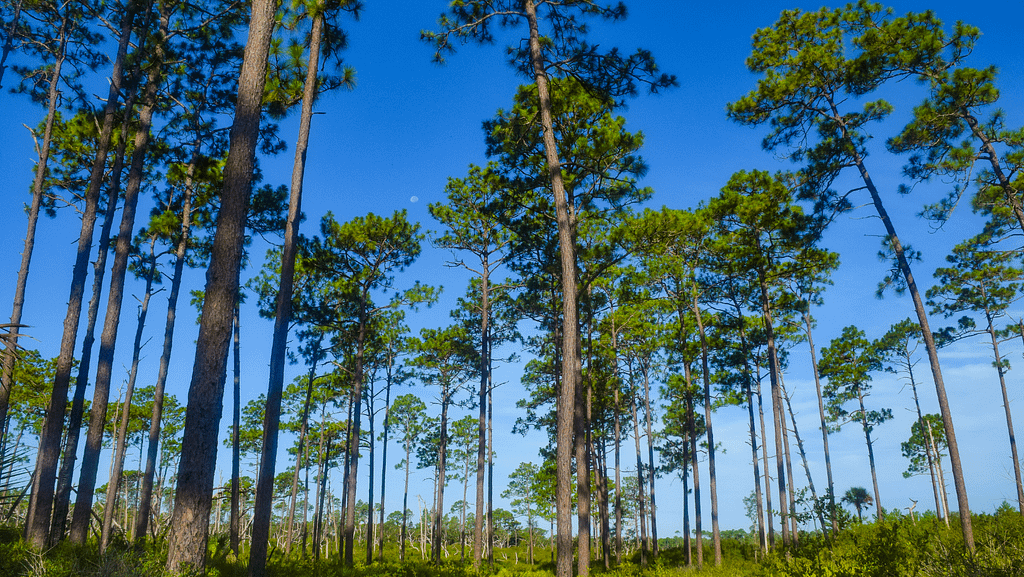
Wilderness Areas
Ocala National Forest features several designated wilderness areas, each offering unique landscapes and opportunities for exploration and solitude. These areas are protected to preserve their natural conditions and provide a sanctuary for wildlife and visitors seeking a true wilderness experience.
- Juniper Prairie Wilderness – The Juniper Prairie Wilderness captivates adventurers with its vast prairies and dense pine forests. Encompassing over 14,000 acres, this wilderness area invites hikers to explore its network of trails and experience the serenity of its open landscapes. Vibrant wildflowers dot the prairies, providing a stunning backdrop for nature enthusiasts. The wilderness is also home to a variety of wildlife, including deer, turkeys, and the elusive Florida black bear.
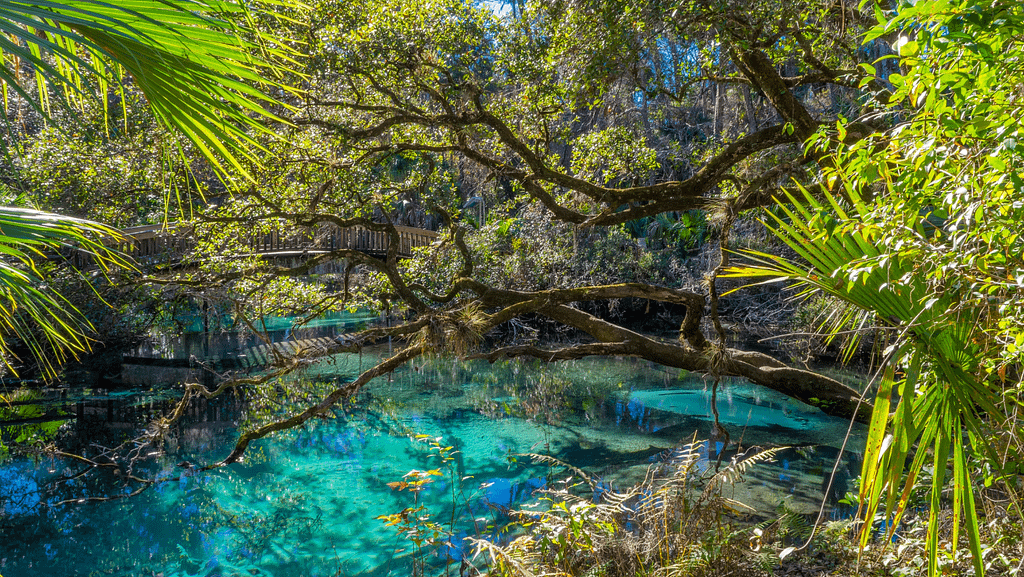
- Little Lake George Wilderness -The Little Lake George Wilderness enchants visitors with its picturesque waterways and lush vegetation. Spanning approximately 2,400 acres, this area offers a peaceful retreat along the St. Johns River. Canoeists and kayakers glide through the tranquil waters, often spotting manatees and alligators along the way. The wilderness also supports a rich tapestry of birdlife, making it a haven for birdwatchers.
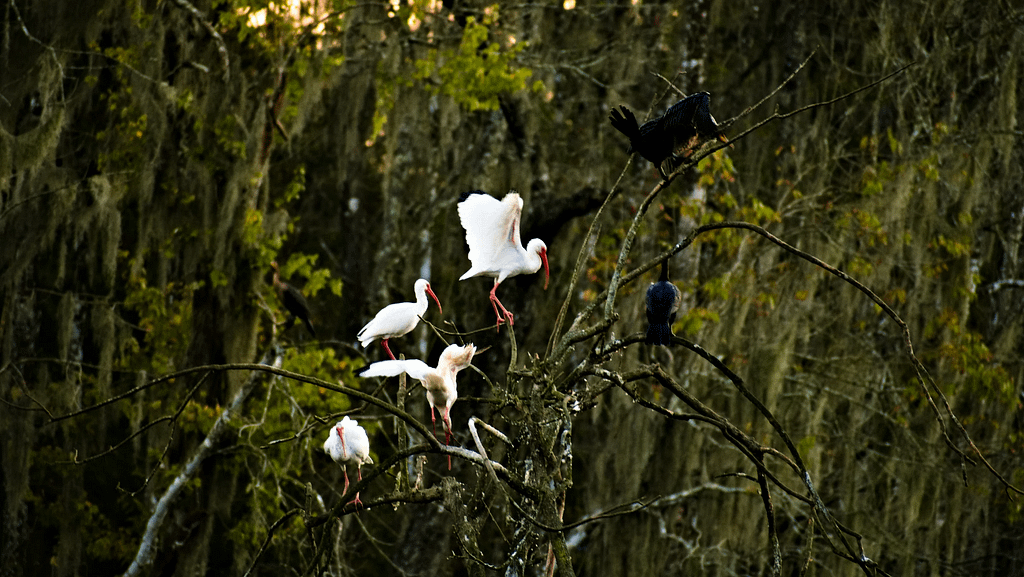
- Billies Bay Wilderness – This wilderness showcases a unique blend of marshes, swamps, and hardwood hammocks. Covering about 3,000 acres, this wilderness area invites explorers to traverse its challenging terrain and discover its hidden beauty. The diverse ecosystems provide critical habitats for numerous species, including the threatened red-cockaded woodpecker and a variety of amphibians. Visitors often find themselves immersed in the natural rhythms of the forest, far from the hustle and bustle of everyday life.
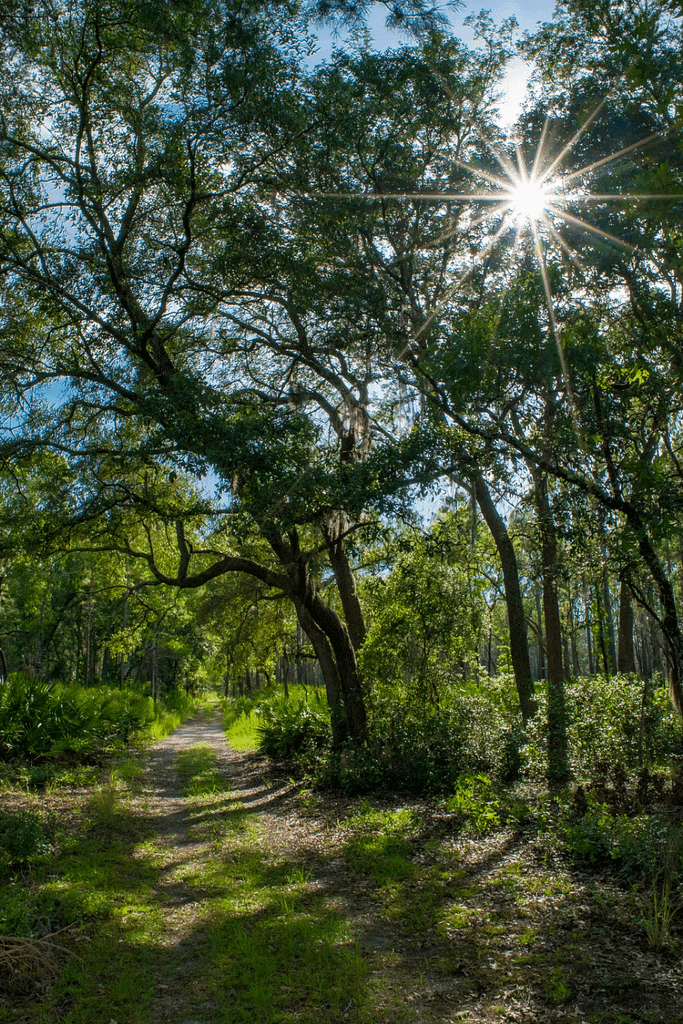
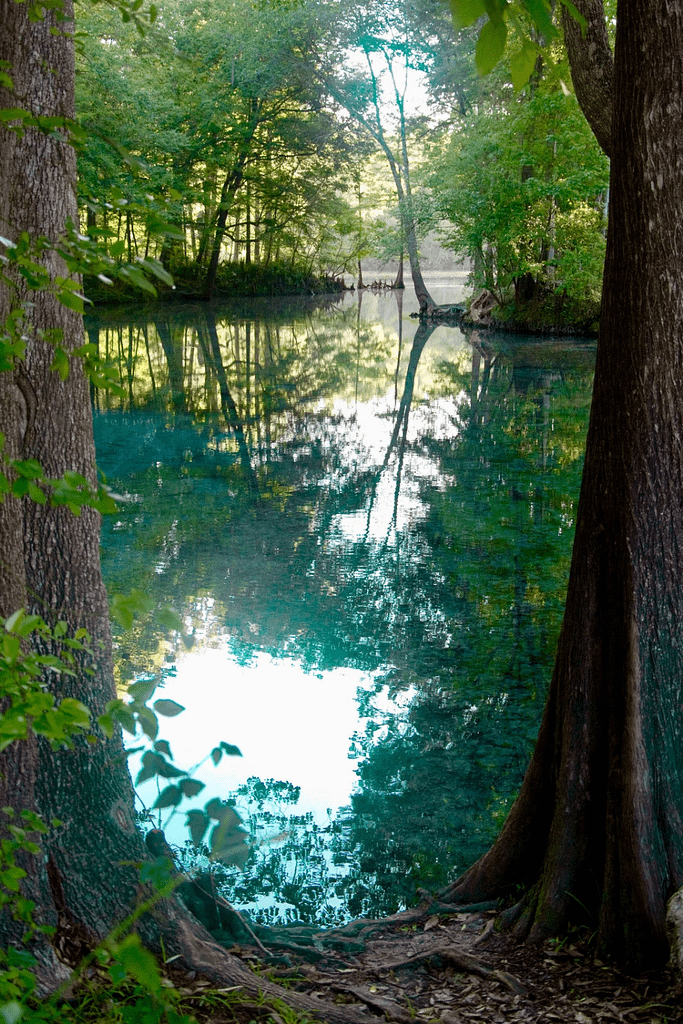
Ocala National Forest Activities
Visitors to Ocala National Forest enjoy a wide range of outdoor activities, from swimming and kayaking to hiking and camping. They dive into the crystal-clear waters of Silver Glen Springs and Juniper Springs, paddle through scenic rivers, and cast their lines in over 600 lakes. Hikers and bikers explore miles of trails, including the Florida National Scenic Trail, which winds through pine forests and scrublands. Campers set up tents or park RVs in one of the many campgrounds, immersing themselves in the natural beauty of Florida’s wilderness.
Adventure seekers rev up their ATVs and dirt bikes on the forest’s extensive OHV (Off-Highway Vehicle) trail system. Wildlife enthusiasts spot black bears, deer, and a variety of birds while exploring the diverse habitats. Hunters track game in designated areas during specific seasons, while horseback riders trot along scenic equestrian trails. History buffs uncover remnants of old logging settlements and visit historic sites like Camp Ocklawaha. Whether hiking, paddling, or off-roading, visitors actively experience the many adventures Ocala National Forest has to offer.
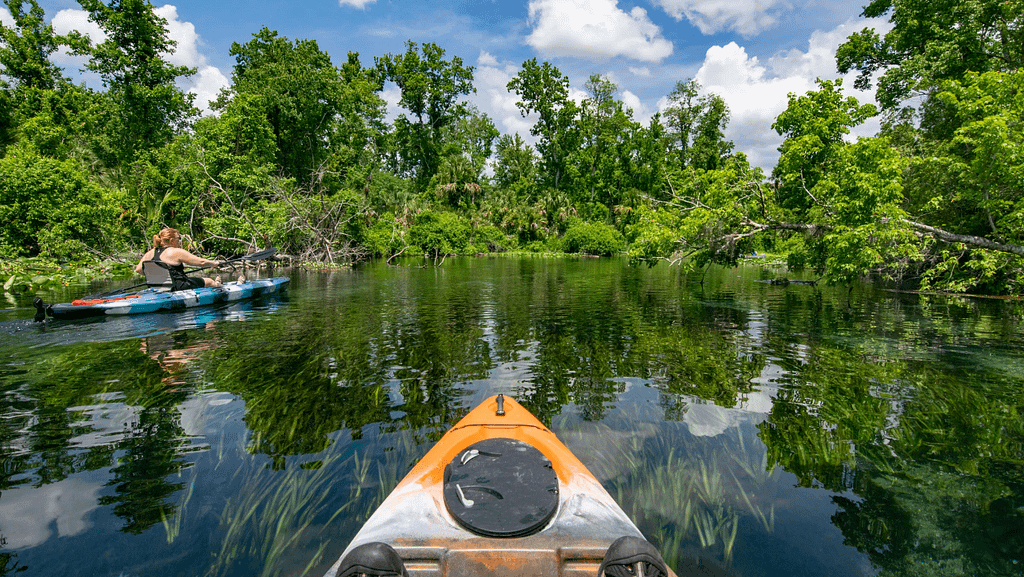
Ocala National Forest enthralls visitors with its rich biodiversity, offering a harmonious blend of adventure and tranquility. As the sun sets over the expansive landscape, the forest invites explorers to embrace its natural beauty through diverse recreational activities like hiking, biking, and canoeing. Furthermore, these activities allow individuals to forge a deep, lasting connection with nature. Meanwhile, the forest’s history of conservation and its diverse ecosystems underscore its vital role as a sanctuary for wildlife and a testament to successful environmental stewardship. Whether navigating the tranquil waterways or traversing the scenic trails, visitors to Ocala National Forest create cherished memories in this magnificent natural haven.
Essential Links
To enhance your visit and provide comprehensive information about the Ocala National Forest, here are some essential online resources:
These links offer valuable insights and tools to make the most of your experience in the Ocala National Forest, whether you’re planning an adventure or seeking to learn more about its natural beauty.
This post has been updated to include the latest data from June 2023, ensuring readers receive the most accurate and up-to-date information. Additionally, we’ve refined the language for enhanced clarity and readability.

